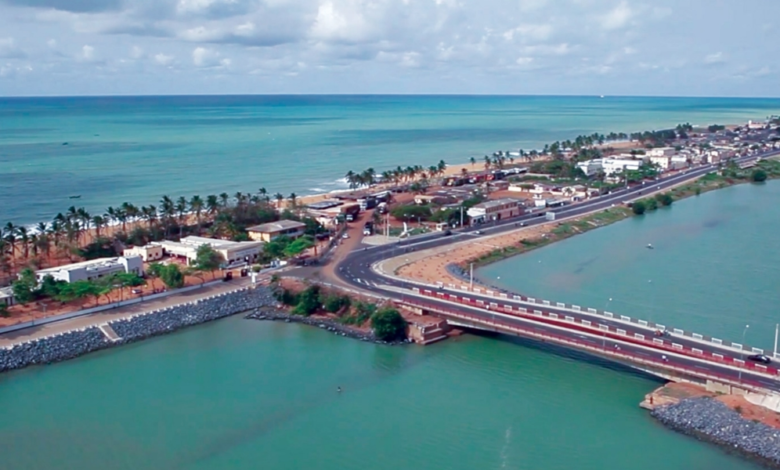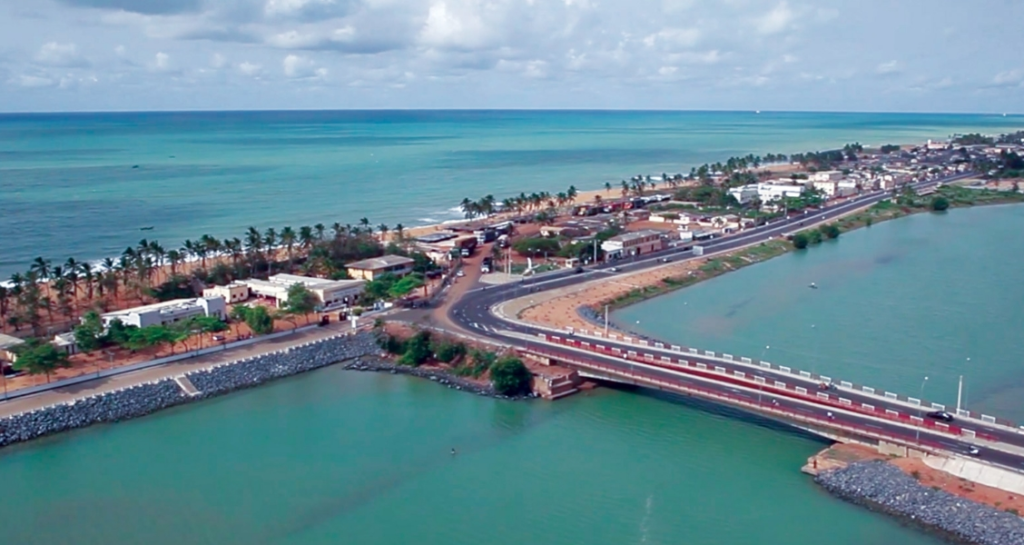The most important and best advice when traveling to Togo

- Safety and Security: Togo has a high degree of caution, and travelers are encouraged to take normal precautions5. Women traveling alone should take similar precautions as they would in any large U.S. city, travel in groups, and be extra vigilant after dark, particularly in the beach and central market areas of Lomé1. It is also important to check for U.S. maritime advisories and alerts if you plan to travel by sea1.
- Medical Facilities: Medical facilities and services in Togo are severely limited, including in the major cities of Lomé and Kara. The standard of care, including basic medical services, such as imaging or blood tests, is much lower than that of the United States and even neighboring Ghana. If you have a recurring or limiting medical condition that requires regular consultation or treatment by a medical professional, you should not travel to Togo1.
- Travel Insurance: It is important to get travel insurance and check that it provides sufficient cover2.
- Entry Requirements: Before you travel, check the ‘Entry requirements’ section for Togo’s current entry restrictions and requirements. These may change with little warning. Monitor this advice for the latest updates and stay in contact with your travel provider2.
- Driving: Driving standards and road conditions in Togo can be poor. Avoid traveling outside towns and cities at night as roads are poorly lit. During the rainy season, minor, unpaved roads may become impassable. You should stop at all control points on request, turn on interior vehicle lights, and only continue when permission has been given to do so2.
- Packing List: The CDC recommends packing items such as insect repellent, sunscreen, and prescription medications6.
Overall, it is important to take normal precautions, be vigilant, and check for the latest updates before traveling to Togo.
- Koutammakou: This UNESCO World Heritage Site is known for its unique architecture and traditional mud houses. The Batammariba people have been living in this region for centuries, and their traditional homes, known as “Takienta,” are a sight to behold123.
- Palais de Lomé: Located in the capital city of Lomé, the Palais de Lomé is a beautiful colonial-era building that now serves as a museum. It showcases Togo’s history and culture through its exhibits and artwork13.
- Mount Agou: As the highest peak in Togo, Mount Agou offers breathtaking views and is a popular destination for hikers and nature enthusiasts. The hike to the summit is challenging but rewarding1.
- Tamberma Villages: These traditional villages are another UNESCO World Heritage Site in Togo. The Tamberma people are known for their unique fortress-like mud houses, which are designed to protect against invasions1.
- Cascade de Yikpa: This picturesque waterfall is located near Kpalimé and offers a refreshing escape from the heat. You can swim in the natural pools or simply enjoy the beauty of the surroundings1.
- Grand Marché: Located in Lomé, the Grand Marché is a bustling local market spread over three floors. It’s a great place to experience the vibrant atmosphere, shop for local crafts, and sample traditional food16.
- Lake Togo: This large lake is a popular destination for water activities such as swimming, sailing, and water skiing. The palm-lined shores offer a relaxing setting for a day by the water46.
- Musee National: Situated in Lomé, the Musee National is a museum that showcases Togo’s history, art, and cultural heritage. It’s a great place to learn more about the country’s rich past4.
These are just a few of the must-see attractions in Togo. The country offers a diverse range of experiences, from cultural heritage sites to natural wonders. Exploring these attractions will give you a deeper understanding of Togo’s history, culture, and natural

- Hiking: Togo has several hiking trails, including the challenging hike to the summit of Mount Agou, which is the highest peak in the country. Other popular hiking trails include the Kpalime Nature Reserve and the Togodo Waterfall Trail13.
- Beach activities: Togo has about 30 miles of coastline with several beaches, including the popular Lomé Beach. Visitors can enjoy water activities such as swimming, diving, and snorkeling, or simply relax on the golden sand6.
- Cycling: Togo has several cycling routes, including the scenic route from Lomé to Aneho. Visitors can rent bicycles and explore the countryside at their own pace1.
- Wildlife watching: Togo has several national parks and reserves, including the Fazao-Malfakassa National Park and the Keran National Park. Visitors can go on guided tours to see a variety of wildlife, including elephants, antelopes, and monkeys13.
- Water sports: Lake Togo is a popular destination for water sports such as sailing, water skiing, and fishing. Visitors can rent boats and equipment or take guided tours14.
- Rock climbing: The Koutammakou region is known for its unique rock formations, which offer a challenging and rewarding rock climbing experience13.
These are just a few of the outdoor activities that visitors can enjoy in Togo. The country offers a range of experiences for adventure enthusiasts and nature lovers.
- Check travel advisories: Before you go, it’s crucial to check the latest travel advisories and information provided by your country’s embassy or consulate. Stay informed about any potential risks or security concerns in specific areas of Togo.
- Get travel insurance: It’s highly recommended to have comprehensive travel insurance that covers medical expenses, trip cancellation, and any unforeseen emergencies. Make sure the insurance policy is suitable for your needs and activities planned in Togo.
- Vaccinations and health precautions: Consult a healthcare professional or travel clinic well in advance to ensure you are up to date on all the necessary vaccinations for Togo. Malaria is prevalent in Togo, so take appropriate anti-malarial medication, use mosquito repellents, and sleep under mosquito nets.
- Respect local customs and traditions: Togo has a rich cultural heritage, and it’s important to respect the customs and traditions of the local people. Dress modestly, especially in rural areas and religious sites. Seek permission before taking photographs of individuals or specific locations.
- Stay hydrated and practice food safety: Drink bottled water or use water purification methods to avoid waterborne diseases. Be cautious with street food and ensure it is freshly cooked and hygienically prepared. Wash your hands frequently or use hand sanitizers.
- Secure your belongings: Keep your valuables, including passports, travel documents, and money, in a secure place such as a hotel safe. Avoid displaying expensive items in public, and be mindful of pickpockets in crowded areas. Consider using a money belt or neck pouch to keep your essentials safe.
- Transportation safety: Use reputable transportation services and licensed taxis. Insist on using meters or agree on a fare before starting your journey. When driving, exercise caution due to road conditions, poor lighting, and unpredictable traffic.
- Learn basic French phrases: French is the official language in Togo, so learning a few basic phrases can go a long way in communicating with locals and enhancing your overall experience. The Togolese people appreciate visitors making an effort to speak their language.
- Explore beyond Lomé: While Lomé, the capital city, has its attractions, consider venturing beyond it to experience the diversity of Togo. Visit places like Kpalimé for its beautiful landscapes, Togoville for its historical significance, and Kara for its traditional markets.
- Connect with locals: Togolese people are known for their warmth and hospitality. Take the time to interact with locals, learn about their culture, and gain insights into their way of life. It can lead to memorable experiences and enrich your journey.
Remember, these tips are general guidelines, and it’s always a good idea to conduct thorough research and tailor your preparations based on your specific travel plans and circumstances. Enjoy your trip to Togo!
- Visa Requirements: Check the visa requirements for Togo based on your nationality. Most visitors will need a visa to enter the country. You can apply for a visa at the Togolese embassy or consulate in your home country or, in some cases, obtain one on arrival at the airport or land borders. Ensure that your passport is valid for at least six months beyond your planned departure date.
- Currency and Banking: The official currency of Togo is the West African CFA Franc (XOF). It’s advisable to carry some cash in small denominations for daily expenses, as credit cards are not widely accepted outside major hotels and establishments in urban areas. ATMs are available in larger cities, but it’s always a good idea to have some cash on hand.
- Transportation: Togo has a limited public transportation system, and the most common way to get around is by shared taxis or moto-taxis (motorcycle taxis). Negotiate the fare before getting in, and be aware that these forms of transport can be crowded and sometimes lack safety standards. Private car rentals are also available in Lomé if you prefer more independence.
- Accommodation: Lomé offers a range of accommodation options, including hotels, guesthouses, and lodges. Outside of Lomé, the choices may be more limited, but you can find guesthouses, eco-lodges, and campsites in popular tourist areas.
- Safety and Security: While Togo is generally safe for travelers, it’s important to take precautions to ensure your safety. Avoid walking alone at night, especially in poorly lit areas, and be cautious with your belongings. Stay informed about the local situation and follow any security advisories or guidelines provided by your embassy or consulate.
- Internet and Communication: Access to the internet is available in major cities and towns, with hotels, cafes, and restaurants offering Wi-Fi services. Consider purchasing a local SIM card for your mobile phone to have access to affordable data and make local calls.
- Climate and Packing: Togo has a tropical climate with distinct wet and dry seasons. The rainy season typically runs from April to October, so pack lightweight, breathable clothing along with a rain jacket or umbrella. Don’t forget to pack sunscreen, insect repellent, a hat, and comfortable walking shoes for outdoor activities.
- Etiquette: Togolese people value politeness and respect. Greeting others with a handshake is customary, and it’s polite to ask for permission before taking photos of individuals or their property. Tipping is not mandatory but is appreciated for good service.
- Health and Safety: Prioritize your health and well-being during your trip. It’s advisable to consult a healthcare professional or travel clinic for up-to-date information on required vaccinations and health precautions. Carry a basic first aid kit, including any necessary medications, and consider travel insurance that covers medical emergencies.
- Local Cuisine: Togolese cuisine is diverse and flavorful. Don’t miss the opportunity to try local dishes like fufu (a starchy staple), grilled fish, and various soups and stews. Be adventurous with street food but ensure it is freshly prepared and cooked in hygienic conditions.
Remember, Togo is a country with rich cultural heritage and natural beauty. Immerse yourself in the local lifestyle, explore the vibrant markets, and engage with the friendly local people to make the most of your journey.

- Festivals and Events: Togo has a vibrant cultural scene, and attending local festivals and events can be a fantastic way to experience the country’s traditions and celebrations. The Epe Ekpe festival in Glidji, held in January or February, is a colorful event featuring traditional dances, rituals, and ceremonies. The Evala festival, which takes place in July, showcases wrestling competitions and cultural performances.
- Voodoo Practices: Voodoo is an integral part of Togolese culture and is practiced by a significant portion of the population. If you’re interested in learning about voodoo, you can visit the Akodessewa Fetish Market in Lomé, which is one of the largest voodoo markets in the region. However, it’s essential to approach voodoo practices with respect and sensitivity.
- Ecotourism and National Parks: Togo boasts several national parks and nature reserves that offer opportunities for ecotourism and wildlife viewing. The Fazao-Malfakassa National Park is known for its diverse flora and fauna, including elephants, buffalo, and various primate species. The Kéran National Park and the Sarakawa National Park are also worth exploring for their natural beauty and biodiversity.
- Beaches and Coastal Areas: Togo has a beautiful coastline along the Gulf of Guinea, offering picturesque beaches and opportunities for relaxation. The most popular beach is in Lomé, where you can enjoy sunbathing, swimming, and beachside activities. Additionally, the nearby town of Aneho is known for its serene beaches and fishing villages.
- Handicrafts and Souvenirs: Togo is known for its traditional handicrafts, and you can find a variety of unique souvenirs to take home. The Artisanal Village in Lomé is a great place to explore and purchase handmade items such as wood carvings, batik fabrics, jewelry, and traditional masks.
- Hiking and Trekking: Togo’s diverse landscapes make it an excellent destination for hiking and trekking enthusiasts. The Kloto region, near Kpalimé, offers picturesque hiking trails through lush forests, waterfalls, and scenic viewpoints. Mount Agou, the highest peak in Togo, is another popular hiking destination, providing stunning panoramic views from the summit.
- Music and Dance: Togo has a vibrant music scene, and traditional rhythms and dances play an important role in the country’s cultural expression. If you have the opportunity, attend a live music performance or visit local bars and nightclubs to experience Togolese music genres such as Agbadja, Tchinkoumé, and Akpessé.
- Sustainable and Responsible Tourism: Togo is increasingly promoting sustainable and responsible tourism practices. Consider supporting local communities and initiatives that focus on preserving the environment and benefiting local populations. Choose eco-friendly accommodations, respect wildlife and natural habitats, and engage in activities that support local artisans and businesses.
- Border Crossings: If you plan to travel to neighboring countries from Togo, be aware of the specific border crossing requirements and regulations. Some popular destinations for cross-border travel include Benin, Ghana, and Burkina Faso. Ensure you have the necessary visas and documentation for your onward journey.
Togo offers a blend of cultural experiences, natural wonders, and warm hospitality. Exploring the country’s diverse landscapes and immersing yourself in its rich traditions will undoubtedly create lasting memories.
- Research the trail: Before embarking on a hike, research the trail and understand the potential risks and challenges associated with it. Check the weather forecast and trail conditions to ensure that it is safe to hike13.
- Hike with a guide: It is recommended to hike with a guide who is familiar with the area and can provide support in case of emergencies. If you choose to hike alone, inform someone of your plans and expected return time12.
- Stay on designated trails: Stick to designated trails and avoid venturing off the path. This can help minimize the risk of getting lost or encountering hazardous terrain1.
- Carry necessary supplies: Carry enough water, snacks, and first aid supplies to last the duration of the hike. Wear appropriate clothing and footwear for the specific trail and weather conditions13.
- Be aware of wildlife: Togo is home to a variety of wildlife, including snakes and insects. Be aware of your surroundings and avoid touching or disturbing any wildlife you encounter1.
- Stay hydrated: Drink plenty of water to stay hydrated during the hike. Avoid drinking tap water and only drink boiled or bottled water to avoid water-borne diseases1.
- Avoid hiking at night: It is recommended to avoid hiking at night, especially outside towns and cities, as roads and trails may be poorly lit and difficult to navigate3.
- Be cautious of theft: Keep your valuables, such as your phone and wallet, secure and out of sight. Avoid carrying large amounts of cash and be cautious of pickpocketing and theft2.
By following these safety precautions, you can enjoy your hiking experience in Togo while minimizing risks and ensuring a safe experience.
- Stay calm: If you come across wildlife, try to remain calm and avoid making sudden movements or loud noises. This can help prevent the animal from feeling threatened and attacking1.
- Keep a safe distance: Keep a safe distance from the animal and avoid getting too close. Do not attempt to touch or feed the animal1.
- Back away slowly: If the animal is blocking your path, back away slowly and try to find an alternative route. Do not turn your back on the animal or run away, as this can trigger a chase response1.
- Make noise: If you are hiking in an area known for wildlife, make noise to alert animals of your presence. This can help prevent surprise encounters1.
- Do not provoke the animal: Do not throw objects at the animal or attempt to provoke it in any way. This can escalate the situation and increase the risk of an attack1.
- Report any incidents: If you have a close encounter with wildlife or witness any illegal activity related to wildlife, report it to the local authorities1.
By following these steps, you can minimize the risk of a dangerous encounter with wildlife while hiking in Togo.



